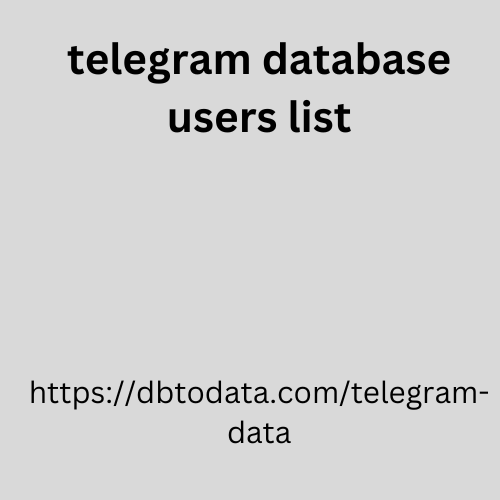Without a lead management process. It is very likely that the acquired leads will soon exit the purchasing process, to then be easily attracted by the competition’s proposal. This happens because gaining the interest of a prospect is only the first step on a long and sometimes tortuous road.
In order for a lead to be converted
It is essential to implement a lead management strategy. Designed to offer potential buyers content that makes them aware of the company’s potential and the opportunities of the services offered. The goal is to increase trust, the basis of any lasting and satisfying professional relationship.
Setting up an effective and targeted lead management plan on the individual lead means ensuring higher closing rates and more result-oriented sales processes.
Here are 6 best practices to improve lead management and obtain concrete results in the short term: let’s get started!
1) Make sure all leads are properly segmented and assigned in the CRM
The first step towards creating an efficient lead management system. Using a CRM, is to make sure that all incoming contacts, regardless of source, are properly labeled, segmented and archived.
To do this, it is essential to receive meaningful information from potential buyers. Similarly, it is necessary to document and define exactly how to segment the database (for example, based on the data you actually want to use).
It is essential to track roles, titles, sector, products and services involved. The latter can be retrieved from the most viewed website pages.
2) Define a sales process for all contacts
One of the most significant ideas for obtaining results undoubtedly concerns the sales process. The more it is defined and studied in detail. The easier it is to create the support nurture to improve the speed of the sales cycle and increase closing rates.
This process can be different depending on the product or service offered. As well as based on the type of lead.
Giving up on standardization of the sales process means complicating activities. Especially when they require interventions with respect to critical areas, sales cycle optimization objectives and increase closing rates.
3) Integrate lead scoring
Lead scoring is the process of assigning numerical values or points to potential customers based on their behavior and interactions with a company’s marketing and sales activities. The goal of lead scoring is to support the sales team in managing leads, especially those closest to conversion.
Be careful not to confuse lead scoring and lead management. We can define the first as a subset of the other that will not only support sales people in defining priorities. But will help set up a process appropriately for people who could move more quickly in the funnel or for opportunities that could be cultivated more decisively.
Lead scoring is typically based on a combination of demographic data. Such as job title or company size, and behavioral data – such as website visits or response to DEM and emails. Points are assigned to each interaction or behavior. With more points assigned to actions that indicate a higher rate of interest and engagement. Once a lead reaches a certain score threshold. It is considered ready for sale and can be handed over to the sales team for follow-up.
However, it is important to regularly review the lead evaluation criteria to remain effective and relevant to changes in customer behavior and preferences.
lead management
4) The importance of educational emails
In the context of lead management, one of the most important activities is the sending of strategic emails by sales.
As we anticipated, it is very important that contact management activities are personalized and designed based on the needs of the potential buyer: this creates trust and allows you to distinguish your offer from that of competitors.
How does an email – which may seem like an impersonal and cold tool – take on the characteristics of an ad hoc communication?
Telemarketing data is most useful for direct marketing. With the help of this telemarketing data, we have telemarketing data of all countries like Mexico, Morocco, Namibia, Iceland etc. With the help of telemarketing it is very easy to contact any buy telemarketing data customer directly. Our skilled team collects these telemarketing data through various tests. The data we provide is accurate and secure.
Here is a potential scenario
A salesperson has a conversation with a potential customer, in which a specific challenge is addressed. At the end of the call, the sales representative can send buy job function email list an in-depth email to the contact, educating them on the problem that has emerged – perhaps inviting them to read case studies, content and guides or to view video demos.
5) Use valuable content
The key to this stage is to allow the sales team to have afb directory content to distribute in the context of their conversations and the stage of the buyer’s journey of the prospects they are working on.
Here is an example of intelligent use of content at different stages of the purchasing process and lead management:
At the beginning of the sales process, diagrams and charts that illustrate the details of the sales strategy can be shared with potential customers. People want to know what to expect and this puts them at ease; images also facilitate the assimilation of information.
When customers have questions about specific types of services. It is useful to share documents, blog posts, company website pages and thus proceed with the training path.
Finally, reference videos of current customers can be shared in the final stages of the sales process to further increase confidence in the skills and results that can be achieved.
6) Track performance
One of the main benefits of setting up a lead management process. Within the CRM is to track the performance of activities. So as to improve any operations and consolidate the best performing practices.
It is necessary to have conversion metrics that show data on progressive profiling. The sales process and conversion rates at all stages of the deal set up in the CRM. To be monitored from month to month.











